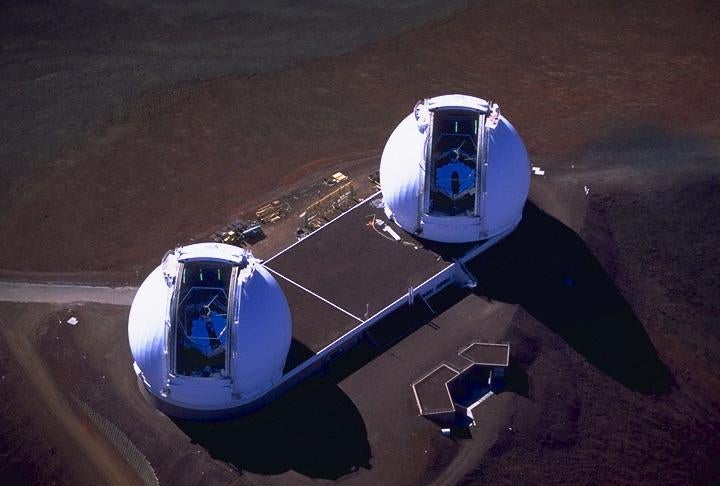Mysterious flashes are coming from impossibly distant galaxies, scientists say
“Homeless” bursts of cosmic energy turn out to have homes after all

Astronomers at the Maunakea Observatories in Hawaii may have solved the puzzle of just where powerful, enigmatic bursts of radiation seen in the sky originate from. Rather than coming out of nowhere, they may originate in galaxies previously too distant to detect.
Gamma Ray Bursts, or GRBs, are the brightest things in the sky since the Big Ban itself, massive explosions releasing more energy in moments than the Sun will in 10 billion years. Astronomers believe these intense emissions of gamma rays, as well as X-rays and other wavelengths of light, come from the collapse of massive stars into black holes, and the collisions of extremely dense neutron stars.
Gamma rays are the most energetic form of light, and possess the shortest wavelength. On Earth, they are produced in nuclear detonations.
Many GRBs have been traced to distant galaxies, but others appear to originate in the middle of nowhere, in empty sky.
“These hostless GRBs presented an intriguing mystery,” University of Maryland/George Washington University astronomer Brendan O’Connor said in a statement. He’s the lead author of a new study on GRBs published in Monthly Notices of the Royal Astronomical Society, and available as a preprint online at arxiv.org.
Searching through records of 120 GRBs, the research team discovered 43 hostless GRBs, bright flashes seemingly coming out of nowhere to scream across the universe.
To resolve the mystery, the research team behind the paper trained Gemini North and Keck Observatory telescopes in Hawaii — with help from the Gemini South telescope in Chili, the Hubble Space Telescope and other facilities — on the afterglow of a hostless GRB known as GRB 151229A.
What they learned is that this GRB, which appears from the direction of the constellation Capricornus from Earth, originated in a galaxy 9 billion light years distant that was too faint to see before the team used the powerful collection of instruments to resolve its image in the distant darkness.
The finding is more than just a solution to a longstanding mystery, according to Dr O’Connor, but could have implications for how scientists understand the evolution of the universe: Neutron star collisions are the types of intense nuclear furnaces necessary to create the heaviest elements in the universe, including gold and plutonium.
“This pushes the timescale back on when the universe received the ‘Midas touch’ and became seeded with the heaviest elements on the periodic table,” he said.
Join our commenting forum
Join thought-provoking conversations, follow other Independent readers and see their replies
Comments
Bookmark popover
Removed from bookmarks